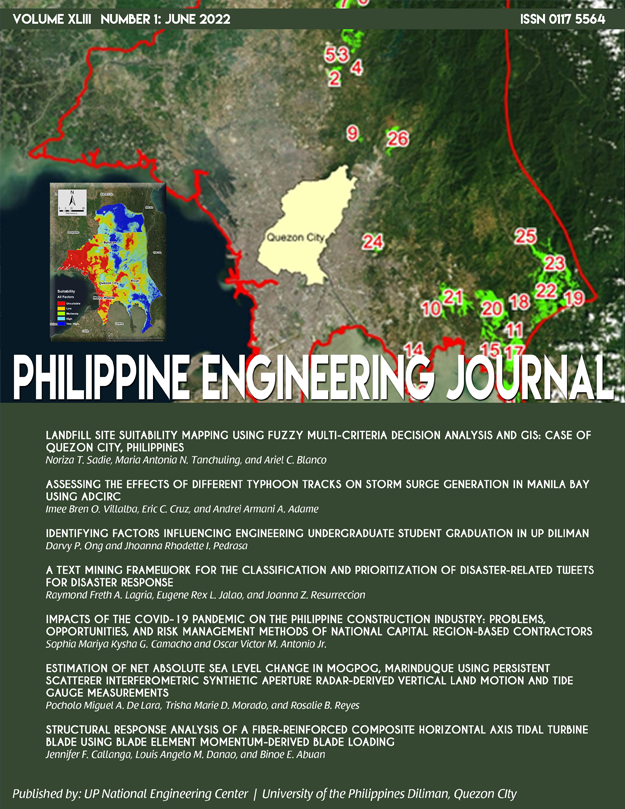Assessing the Effects of Different Typhoon Tracks on Storm Surge Generation in Manila Bay using ADCIRC
Abstract
Manila Bay is an important semi-enclosed bay in the Philippines that is considered vulnerable to storm surges due to its shallow bathymetry and exposure to typhoons. To help in coastal disaster assessment, this paper investigates the effects of different typhoon tracks on storm surge generation in Manila Bay. A storm surge model was developed for Manila Bay using the Advanced Circulation (ADCIRC) model. The model was validated using the observed data during Typhoon Rammasun (Glenda) 2014. From analysis of historical typhoon tracks, three (3) major group of typhoon track directions were considered in this study – namely, due Northwest (NW), due West (W), and due Southwest (SW). The synthetic tracks per direction group were created from historical tracks and shifting the tracks vertically, creating a total of 5 tracks per direction. The tracks were then simulated using the intensity of the calibrated Typhoon Rammasun 2014. It is found that NW tracks produced higher peak surges compared to W and SW tracks, and the due Northwest track traversing near the center of the bay (NW3 track) produced the highest peak storm surges. Also, shifting the tracks along the latitude affected the magnitude and duration of storm surges along the coast. Highest peak storm surges for all the tracks were located at the northern portion of the bay along the coasts of Pampanga and Northern Bataan. In Bacoor Bay, peak surges occurred first than peak surges in other coastlines. Different windspeeds of 80, 100, and 120 knots were also simulated using NW3 track resulting to corresponding highest water levels of 4.5 m, 5.0 m, and 6.7 m, respectively. The results of the study highlight that the characteristics of peak storm surge variation along the coasts of Manila Bay are influenced by the bathymetry, coastline orientation, and shape of the bay.
Keywords — ADCIRC, Manila Bay, storm surge, Typhoon Rammasun, typhoon tracks


